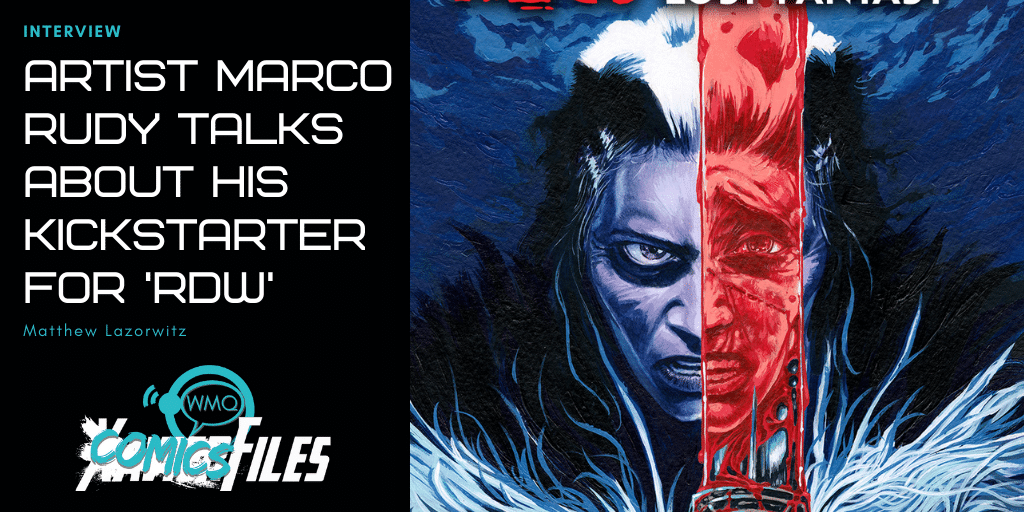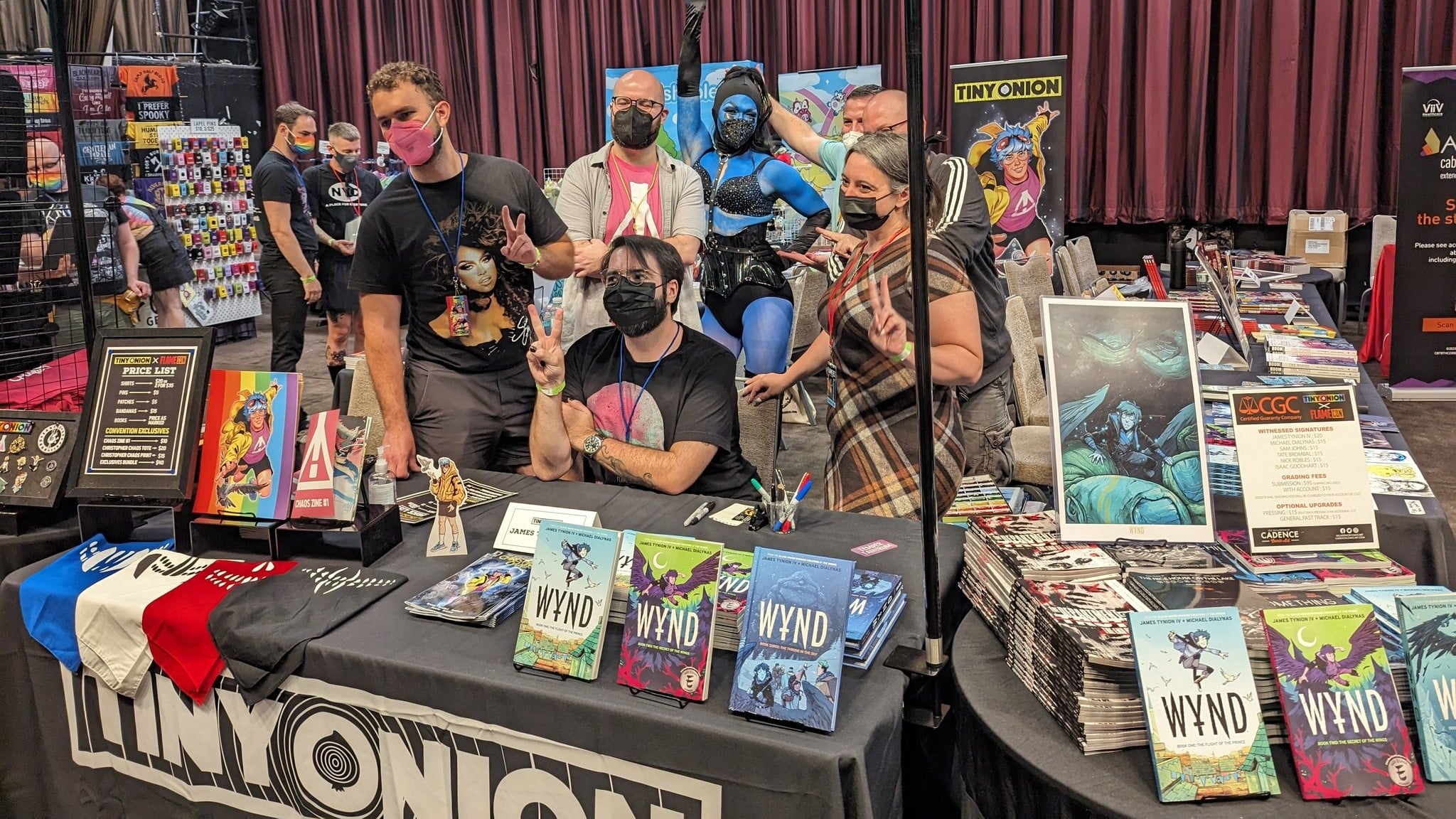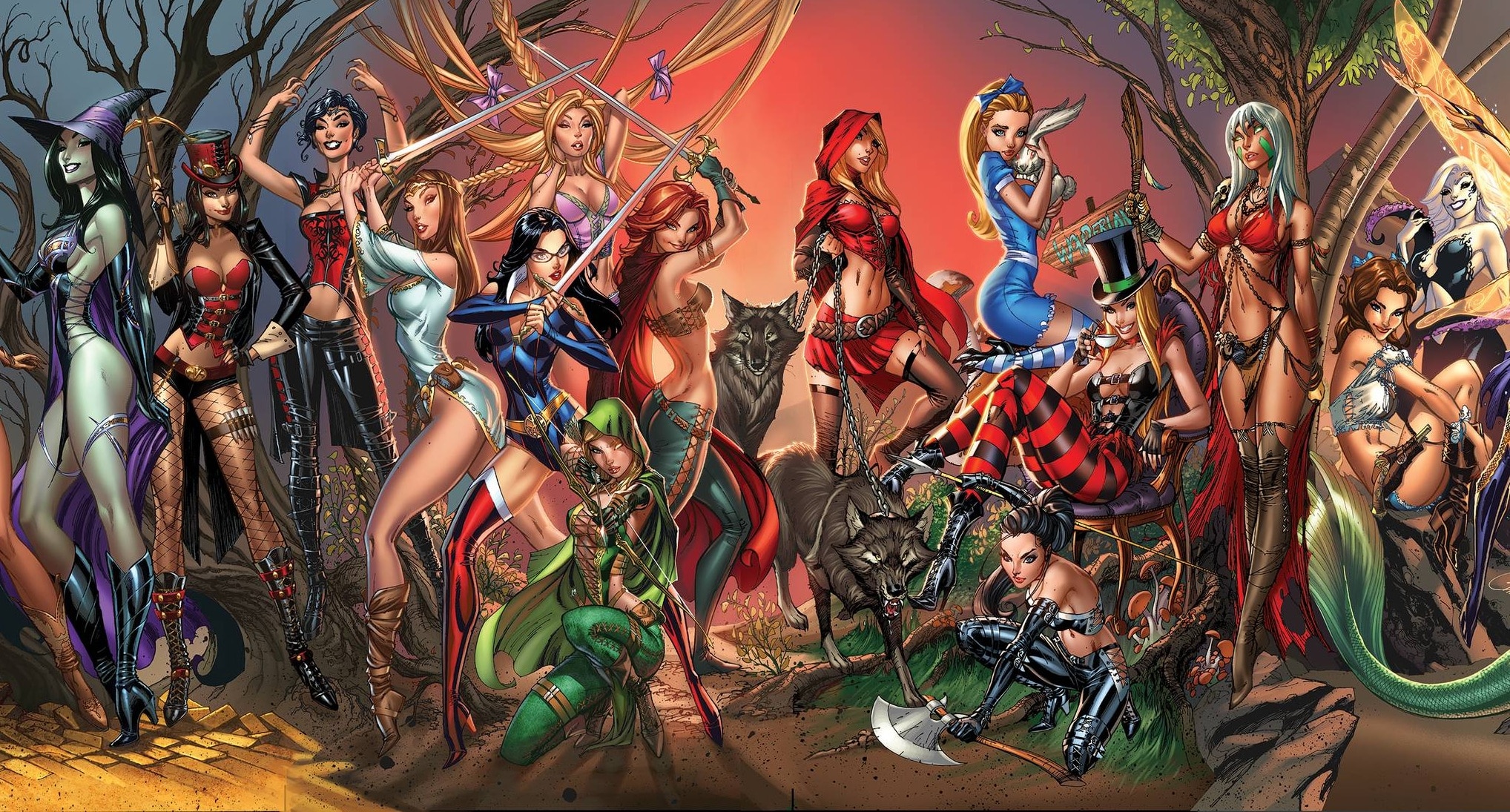The latest in our series of profiles of Kickstarters you should check out is “RDW,” a dark fantasy comic from creator Marco Rudy. You may know Rudy’s work from “The Shield” at DC or “Uncanny X-Men” and “Bucky Barnes: The Winter Soldier” at Marvel. We sat down with Rudy to talk story, inspirations and his artistic process.

Matt Lazorwitz: Can you give us the elevator pitch for “RDW”?
Marco Rudy: “RDW” Is essentially a story about addiction, withdrawal and its effects on oneself, and those around you, tempered by the fact that it is set in a fantasy world, ripe with dragons, magic and much more.
ML: Why did you decide to bring this project to Kickstarter?
MR: I felt like it is the best way to have a complete connection with the audience, as essentially this story will only exist if there is enough of an audience to care for it. It is also a limitless enabler of ideas — whatever project one can come up with, one can bring to Kickstarter. If it’s interesting or curious, or fun enough, there will be somebody asking for it. Carte blanche for creativity, full responsibility for final results.
ML: Are you a longtime fan of dark fantasy? Is it a genre you’ve always wanted to work in?
MR: To be honest – not initially. Well, it depends, since we can include “Sandman,” Alan Moore’s “Swamp Thing,” Mike Carey’s “Lucifer” and so much more, into the genre, then yes, I have always been a fan. In prose, what got me seriously into it was reading Andrzej Sapkowski’s novels for “The Witcher.” His writing style, characters, storytelling, social commentary and more is what got me pumped to tell a story. In fact, I pitched myself as an artist for a possible ”Witcher” comics series, several times. Eventually, after another negative answer, I just went about creating those stories myself.

ML: The themes of the book — guilt, addiction, pain — are heavy stuff. What made you want to explore them? And why does fantasy work for that?
MR: I very much like the idea of finding positivity in dark scenarios – and at the same time recognizing just how dark and grimy real life can be. If I can combine these to tell a halfway compelling story that, on the one hand, transports the reader to an alien world, with its genuine fantasy – but at the same time – a very relatable world, in which real themes are front and center, using the imagery and metaphor to better convey a message? Then I did my job.
What initially got me thinking about it was the aforementioned “Swamp Thing,” “Lucifer” and “Witcher” novels – besides a set of video games, like “Gris,” among others – both mediums extremely successful in their ways of telling these types of stories and keeping current. I love that. So I decided to try my hand.
ML: Without spoiling too much of the process work you’ll be including as part of the rewards, what is your artistic process like? Your art is so intricate and gorgeous, it boggles my non-artistic mind.
MR: Hehehe; thank you. My process is slow – after I write the plot I divide the book, scene by scene, and work around visuals and writing for each scene, in tandem. I write dialogue as I’m designing layout on a page, heavily influenced by the mood of each scene, what I’m trying to convey in each action and so on. Finally the painting, the colors, are somewhat selected as I’m in this design layout-write page stage – as the mood sets the color palette I aim for. Then I work it around and around, rewrite, redraw, until something comes out. Rinse and repeat.

ML: You mention you’ll be drawing from folklore less focused on in Western culture, like First Nations of the Americas, Brazilian and Mozambican. How did you research these? Did you read these stories and want to incorporate them, or start working on the book and then decide to seek out mythological influence outside the typical Greco-Roman, Norse and Egyptian myths?
MR: A bit of both – I am a child of many cultures – I am Mozambican-born (a former Portuguese colony, in the continent of Africa), and I have lived a long part of my life in Brazil and now in Canada. Those were my first ideas of cultures that I would like to portray, knowing that you don’t see them outside their countries (or in comics) that much. I was also interested in knowing more folk tales of indigenous peoples around the world, so I went about searching for more. Neil Gaiman in “Sandman” (and more) does a fantastic job shedding light on a myriad of facets of this world and its culture, so again, I wanted to try my hand at the very same exercise. We don’t see much different things (with notable exceptions) outside of Western elves and dwarves and while they are very much a part of the story I am telling, they come with a twist, a different interpretation. One thing – the further discussion of the world and its peoples — happens as the story goes, in the next books. Vol. 1 is your introduction – we delve deeper into things on Vol. 2, 3 and so on.

ML: Finally, did you ever think you would work on a book that lists Mozambican folklore, “Mr. Robot” and “Asterix” as influences and inspirations? Those are some wildly divergent sources, and I am all for it.
MR: To be honest, I never thought I’d work in comics. My background and where I’m from, it’s just not something I could ever aspire to be. Much less that eventually I’d create my own, so I am as much surprised to be here as everybody else. However, I have had this burning desire to contribute with a story of my own, on my own terms, for quite a bit now. Let us find out how I do.
First we have to get this thing funded.
You can find out more about “RDW” and back it on Kickstarter.
Matt Lazorwitz read his first comic at the age of 5. It was Who's Who in the DC Universe #2, featuring characters whose names begin with B, which explains so much about his Batman obsession. He writes about comics he loves, and co-hosts the podcasts BatChat with Matt & Will and The ComicsXF Interview Podcast.






